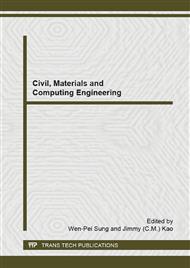p.3
p.7
p.13
p.18
p.22
p.28
p.33
p.37
The Effect of Holding Time under Heat Treatment on the Properties of T92 Steel Welding Joint
Abstract:
This article describes the welding joint property of ferrite heat-resistant alloy steel T92 by taking tungsten inert gas (TIG) welding measures before post weld heat treatment on 760°C with holding time of 0,2,4 hours. Test data were analyzed in relation to microstructure,tensile and impact properties and hardness distribution on the welding joint,then the effect of holding time under post weld heat treatment on properties of joints can be investigated.The results demonstrated that micro-hardness in the weld and tensile strength decreased with tempering time prolonging, while impact toughness increased with the extension of tempering time. The untempered martensite in form of needle was coarse in the joint. With the extension of holding time under tempering, the martensite structure obtains fine grain and the lath characteristic becomes obvious. It can be found that the segregation of carbides in base metal occurred and the content of ferrite increased with the extension of holding time under tempering.
Info:
Periodical:
Pages:
7-12
Citation:
Online since:
December 2014
Authors:
Keywords:
Price:
Сopyright:
© 2015 Trans Tech Publications Ltd. All Rights Reserved
Share:
Citation:


